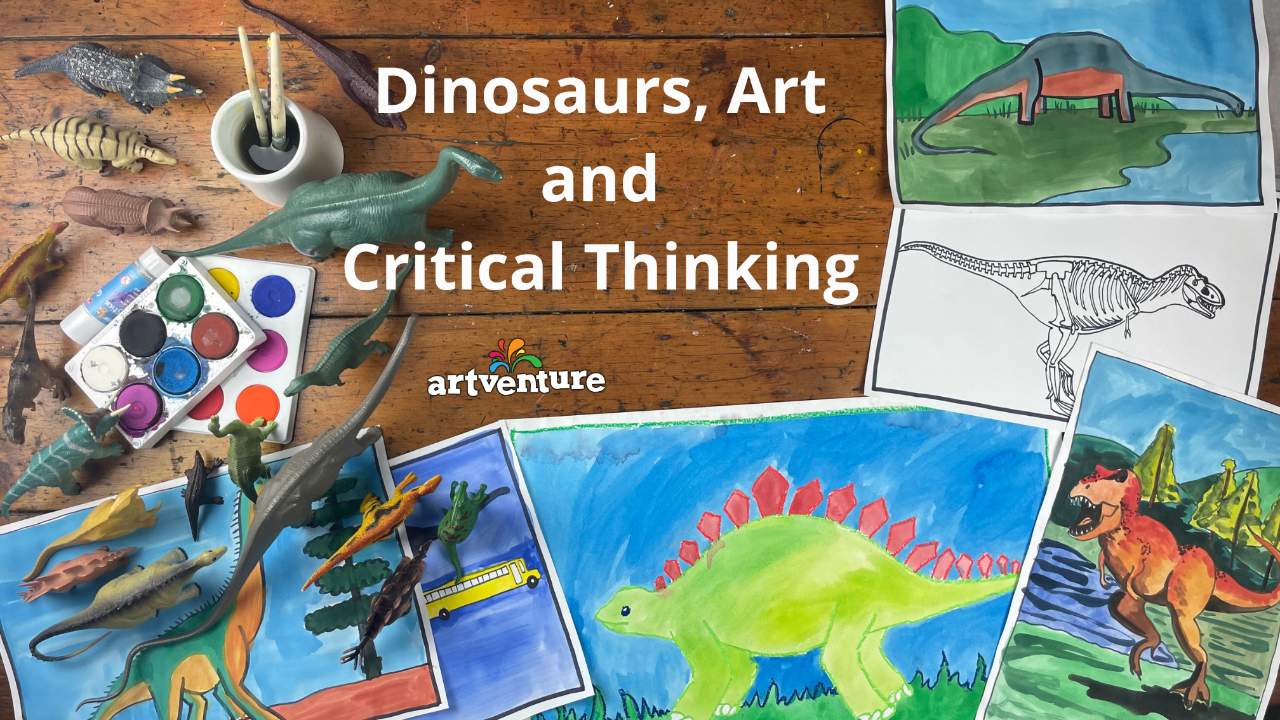Dinosaurs and Art Lessons for Critical Thinking
Aug 21, 2023
Dinosaurs and Art Lessons for Critical Thinking
How can drawing dinosaurs help children become better thinkers?
Drawing Prehistoric Life: Art Meets Imagination
How can we illustrate the world before written records—before humans even existed? Depicting dinosaurs offers a creative solution. Artists, from early palaeoartists to today’s illustrators, interpret fossil evidence and scientific discoveries to bring extinct creatures to life. Their process—researching, planning, sketching, evaluating—is a brilliant example of critical thinking in action.
Developing Critical and Creative Thinking Through Art
Palaeoartists don’t just draw—they question, investigate, and communicate ideas visually. This mirrors critical and creative thinking, one of the Australian Curriculum’s General Capabilities. When students engage in similar artistic challenges, they develop skills like:
-
Observation and attention to detail
-
Curiosity and idea generation
-
Decision-making and evaluation
-
Expressive communication
How Kids Learn to Think Like Scientists and Artists
Children today can’t observe dinosaurs firsthand. Instead, they rely on artworks and fossil reconstructions to understand these ancient animals. When they draw dinosaurs, kids are encouraged to:
-
Ask questions: What did this dinosaur eat? How did it move?
-
Investigate: What do fossils tell us?
-
Imagine: What colour were dinosaurs? Did they have feathers?
Even simple drawing activities can help children make connections between science and art.
Curriculum Links: Science + Visual Arts + General Capabilities
1. General Capabilities
Through inquiry-based art projects, students:
-
Pose questions
-
Organise and evaluate information
-
Communicate thinking visually
2. Science
In biological science and inquiry units, students:
-
Investigate living things (past and present)
-
Learn about habitats, behaviours, and evolution
-
Apply inquiry skills: predicting, planning, analysing
3. Visual Arts
From Foundation to Year 6, the curriculum encourages:
-
Responding to and interpreting artworks
-
Experimenting with materials and techniques
-
Representing ideas through drawing
Lesson Examples by Year Level
-
Foundation – Year 2: Identify dinosaur features through simple drawings
-
Years 3–4: Use historical artworks as inspiration
-
Years 5–6: Explore visual conventions—scaly textures, inferred size, feather patterns, and movement
Creative Inquiry: Art as a Tool for Scientific Exploration
Just as palaeontologists reconstruct the past, children use art to process ideas and express what they’ve learned. Open-ended questions such as:
-
How do we know what dinosaurs looked like?
-
Why are there different interpretations?
-
What if new fossils are discovered?
…all spark deeper thinking.
Seeing Dinosaurs Through Art
Drawing builds understanding. From rough sketches to detailed digital art and animation, every dinosaur artwork tells a story. Kids can explore:
-
Shapes, sizes, and movements
-
Environments and behaviour
-
Real vs. imagined interpretations
This is where drawing meets metacognition—thinking about thinking.
Artventure Dinosaur Lessons for Home or School
Here are some step-by-step dinosaur art lessons available on Artventure:
-
Stegosaurus (Level 1)
-
Triceratops (Level 2)
-
Tyrannosaurus Rex (Level 5)
Even if it’s just for fun, these activities encourage curiosity, visual literacy, and critical questioning—key skills for the future.
Final Thoughts: From Curiosity to Critical Thinking
Drawing dinosaurs offers more than artistic fun—it lays the foundation for critical and creative thinking. By combining science, imagination, and hands-on creation, kids become palaeoartists, investigators, and storytellers.
Looking to nurture your child’s creative thinking? Try our Artventure lessons!

